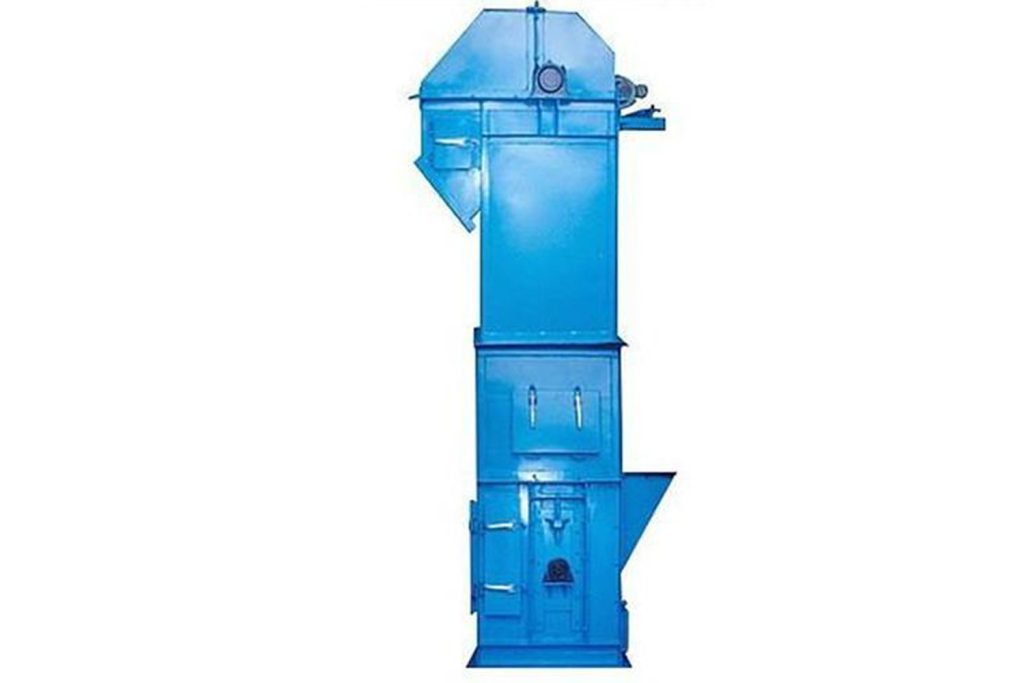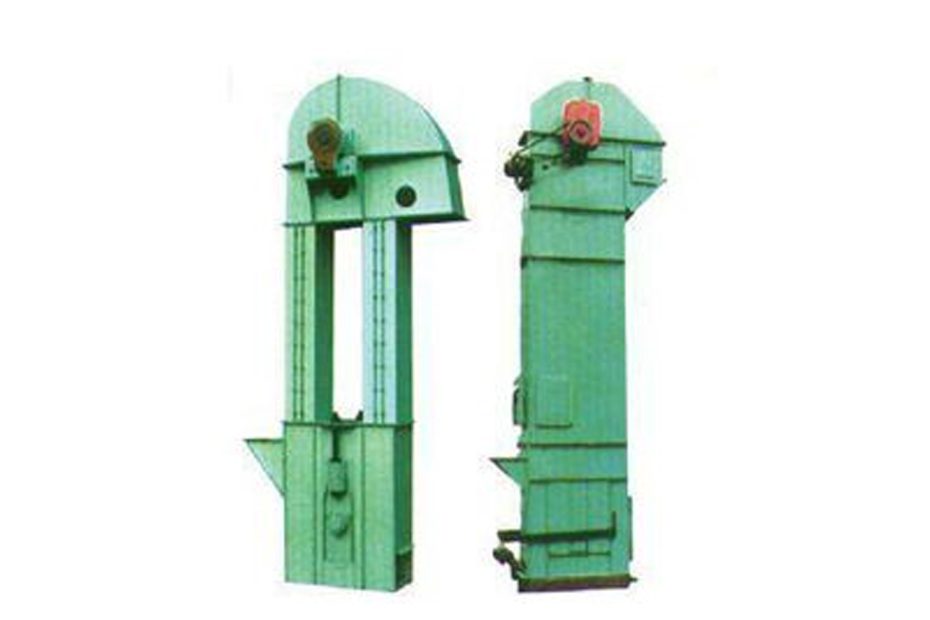Bucket elevator, referred to as bucket elevator, uses chain or belt as traction force to realize vertical lifting of materials. Bucket elevator is a kind of mechanical conveying equipment mainly used in grain, oil, feed, chemical fertilizer, ore and other industries to realize the lifting and lowering of powdery, granular, small block and difficult-to-adhesive materials in a large vertical direction.
Bucket elevator is a commonly used continuous material conveying equipment, which is used to realize the conveying of materials with high lifting height. The bucket elevator uses the closed ring-shaped bucket belt that surrounds and is tensioned on the head wheel and the bottom wheel as the traction component, and uses the bucket installed on the bucket belt as the material delivery component, and the material is conveyed through the continuous operation of the bucket belt.
7 selection principles of bucket elevator
Material properties
The material property is one of the most important factors in choosing a bucket elevator, which affects its discharge method, bucket design, transfer capacity and other aspects. For example, for wet, caking materials, a bucket design with drainage is best.
timeliness, viscosity, particle size
Factors such as viscosity, particle size, and timeliness of different materials will also affect the selection of bucket elevators. For example, when conveying bulk materials, you can choose stainless steel buckets and cast buckets; for viscous materials, you need to choose buckets with smooth discharge.

Delivery capacity and lifting height
When choosing a bucket elevator, the conveying capacity and lifting height of the loaded material should also be considered. That is, the volume and weight of the material, and the high-low ratio of the height. In order to determine the most suitable bucket elevator specifications and the required number of buckets.
power drive
The driving mode of the bucket elevator will also affect its selection. Generally, different power drives are selected according to the needs. For example, chain bucket elevators generally use gear reducers as the driving mechanism, while drum bucket elevators mostly use motors, gear reducers and other driving methods. Each driving method has its own advantages and disadvantages.
structure type
In addition to the driving mode, bucket elevators also have different structural forms. Different forms of structural design will affect its manufacturing cost, bucket service life, maintenance difficulty and other aspects. Therefore, be sure to determine the appropriate structural form according to actual needs.
safety
Bucket elevator safety can be seen throughout the selection process. When choosing, safety factors such as explosion-proof, tightness, shock absorption and noise reduction, start-stop protection, etc. should be considered. Regardless of whether it is from the perspective of protecting workers or equipment, safety must be placed in the most important position.
economic benefits
Of course, in the process of selecting bucket elevators, it is also necessary to conduct economic benefit analysis. According to the demand of production, the economic benefits of the bucket elevator can be considered by comprehensively considering factors such as the service life of the bucket elevator, maintenance costs, and opportunities for equipment renewal.
In conclusion
The principles and methods of selecting bucket elevators need to comprehensively integrate different factors. According to the characteristics of materials, conveying capacity and lifting height, driving mode and structure, safety and economy, etc., choose the bucket elevator that suits you.
At the same time, for the selected bucket elevator, it is necessary to strengthen its daily maintenance and maintenance management to ensure its normal, safe and efficient operation, so as to improve production efficiency and economic benefits.
